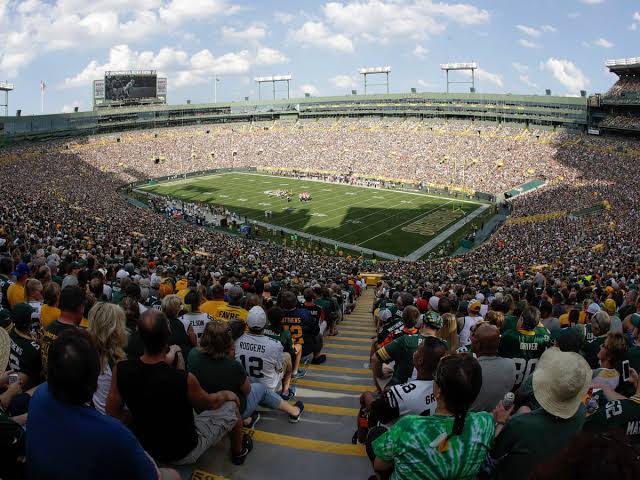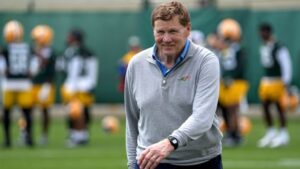
Inside the Unique Governance of the Green Bay Packers: How 538,967 ‘Owners’ — and One President — Run America’s Only Fan-Owned NFL Team…
In the world of American football, where billionaire owners typically call the shots, the Green Bay Packers stand apart as a beacon of community-driven governance. With a staggering 538,967 shareholders, they proudly hold the distinction of being the only publicly owned franchise in the NFL. This unique ownership structure not only sets them apart from their counterparts but also highlights a fascinating experiment in sports management and community engagement.
**The Legacy of Public Ownership**
Founded in 1919, the Green Bay Packers have a storied history that reflects the essence of their community. The team’s survival and success are deeply intertwined with the support of their fanbase, whose dedication transcends mere spectatorship. This devotion culminated in the team’s decision to become publicly owned in 1923, a move that ensured the Packers would remain rooted in Green Bay despite financial challenges.
**How It Works: Shareholders and Governance**
The ownership structure of the Packers is built around their shareholders, who are more than just fans — they are co-owners. Shareholders have the right to vote on major decisions affecting the team, such as electing the Board of Directors and approving key organizational changes. This democratic approach gives every shareholder, regardless of the size of their stake, a voice in the team’s future.
**The Power of Community and Identity**
For Packers fans, owning a piece of the team goes beyond financial investment; it’s about preserving a cultural legacy. Shareholders often pass down their ownership from generation to generation, reinforcing a sense of community and continuity that is rare in professional sports. This collective ownership fosters a deep emotional connection between the team and its supporters, creating a unique bond that extends far beyond the football field.
**Challenges and Benefits**
While the Packers’ ownership model is celebrated for its community-oriented ethos, it also presents challenges. The team cannot sell shares to raise funds like other franchises, limiting their ability to finance large-scale projects independently. However, this constraint is balanced by the resilience and unity that public ownership instills in the organization, ensuring decisions are made with the long-term interests of the community in mind.
**The Role of the President**
At the helm of this unique organizational structure is the team president, who navigates the intersection of football operations and shareholder interests. This role requires not only a deep understanding of the game but also strong leadership skills to balance the demands of fans, shareholders, and the NFL’s competitive landscape.
**Impact on the NFL Landscape**
The Packers’ ownership model has made them a symbol of innovation in professional sports, challenging the notion that private ownership is the only path to success. Their sustained competitiveness on the field and financial stability off it serve as a testament to the viability of community-focused ownership in modern sports.
**Looking Ahead**
As the NFL continues to evolve, the Green Bay Packers remain steadfast in their commitment to community ownership. Their model offers a compelling alternative to the league’s traditional ownership structure, demonstrating that success can be achieved without sacrificing the values of community and inclusivity.

**Conclusion**
In a league dominated by billionaire owners, the Green Bay Packers stand as a testament to the power of community and collective ownership. With nearly 540,000 shareholders and a dedicated president at the helm, they continue to thrive both on and off the field. Their story serves as an inspiration for sports fans and organizations alike, proving that passion, unity, and a shared sense of purpose can propel a team to greatness in the world of professional sports.
Leave a Reply